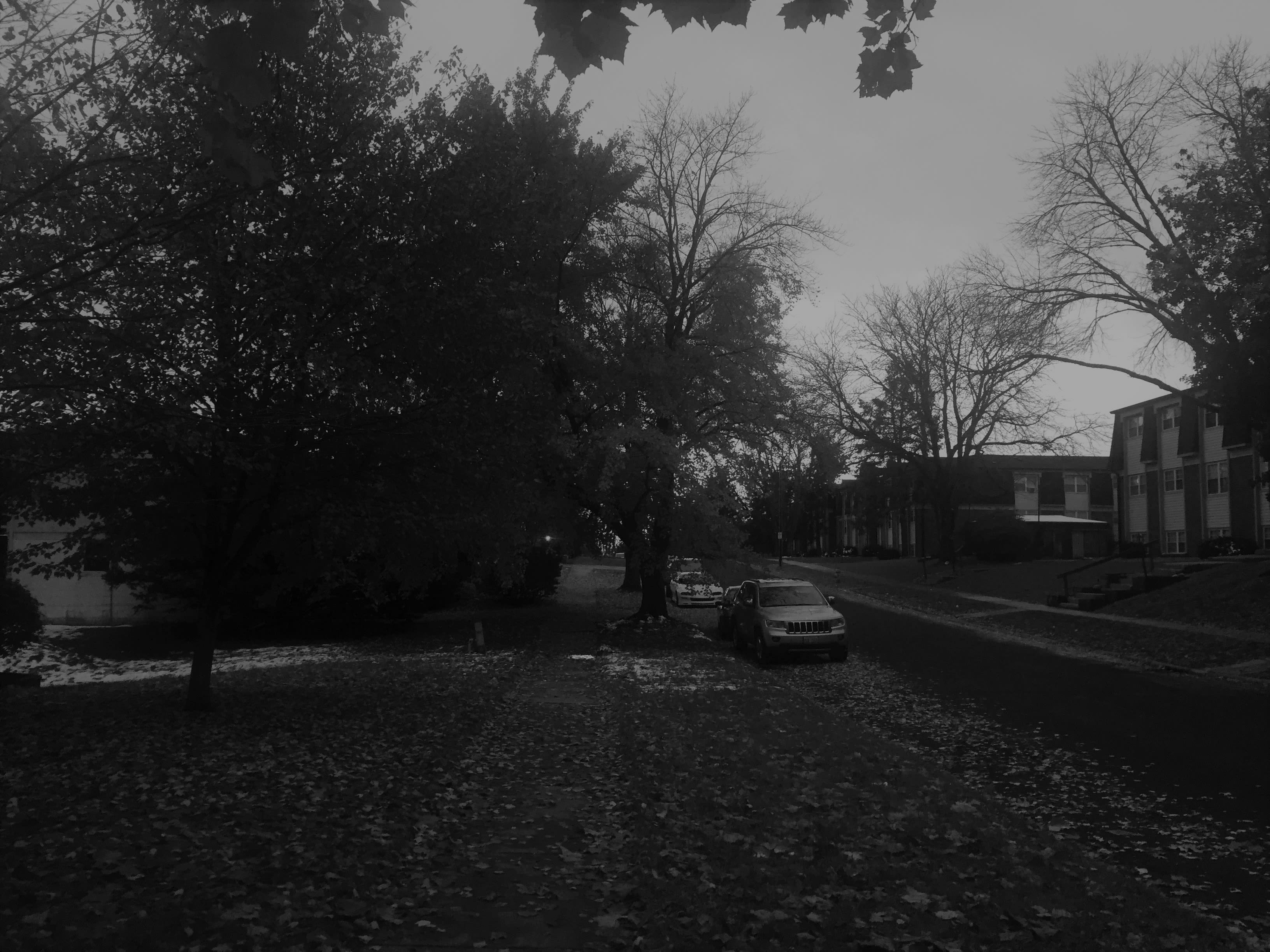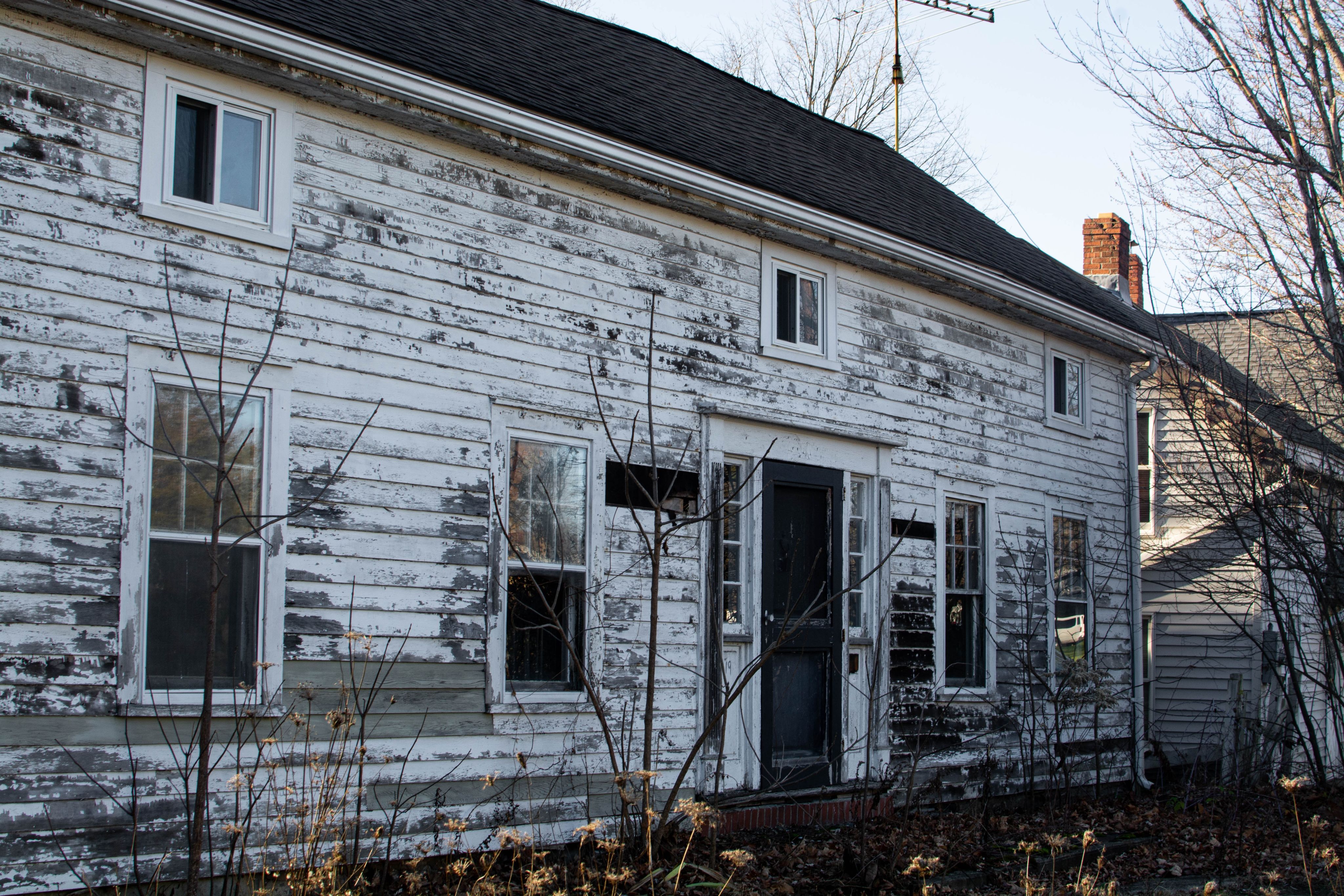Energy insecurity
Have you ever turned off the heater or AC to save money, making your home too cold or too hot?
You may have been energy insecure.
Energy insecurity is the "inability to meet basic household energy needs"
This could mean that a family doesn't have enough money to cover rent and utilities, so they go without heating for a month. Or, it could mean that a mother skips meals so that she can keep the lights on — and food on her children's plates.
While most people haven't heard of energy insecurity, it's widespread. In fact, 27% of all US households experienced energy insecurity in 2020. You, or someone you know, has probably been energy insecure in their life.
"It's either pay the electricity bill or do what I gotta do for my kids and to be honest with you I'd rather just turn all this stuff off."
-Participant, "Understanding ‘energy insecurity’ and why it matters to health" by Diana Hernandez

The intersection of race, income, and energy insecurity
In the US, energy insecurity is racialized, with outsized impacts on households of color. Over half of all Black and Native American households experienced energy insecurity, while over 40% of all Hispanic, multiracial, and Native Hawaiian or Pacific Islander households were energy insecure in 2020.
Because there is a racial income gap in the US, racialized disparities in income reinforce racialized disparities in energy insecurity: households making less than $10,000 are over 7.5 times more likely to be energy insecure than households earning $150,000. And while higher-income households are less likely to experience energy insecurity, rates are still too large for relatively wealthier households: over 20% of households earning $60,000 to $100,000 experienced energy insecurity in 2020.
This means that energy insecurity intensifies other vulnerabilities that have racialized impacts, like food insecurity. Think about it this way: if a family is unable to pay for electricity or gas, they can’t turn on their stove. This limits people’s abilities to cook hot meals, forcing them to turn to cold foods, prepared foods, or microwaveable meals — often, not the healthiest alternatives and, perhaps, more expensive. Energy insecurity reinforces existing barriers that low-income households face in safely and healthily moving through the world — and deepens racial inequity.
“A sudden setback like illness or unemployment can lead to a negative spiral of mounting bills, disconnection notices, evictions, and homelessness. . . Too often families have to choose between basic necessities — whether to pay the rent, heat their apartment, eat a meal, or purchase medications.”
-Diana Hernandez, quoted in "Power Dynamic: Energy Insecurity and Health"

Households find ways to cope — but run the risk of harming their health.
Nearly 25 million US households reported skipping or reducing food or medicine to cover energy costs in 2020. This means that 1 in 5 households in the US went hungry or risked their health to pay utility costs. Meanwhile, 10% of households – 1 in 10 families – reported setting the thermostat at an unhealthy temperature to manage costs. Plus, a combined 11.43 million households were unable to use either heating or air conditioning facilities.
When these vulnerabilities layer on top of each other, they force families to make hard tradeoffs. And over time, the impacts of these tradeoffs and hardships pile up. A recent report described how energy insecurity can wear down people’s “resilience reserves.” The everyday stresses of navigating utility shutoffs, skipping medications, and keeping homes at unsafe temperatures diminishes people’s ability to rebound in the face of additional hardship.
In a 2016 study of households in the Boston area, researchers found that some energy insecure participants faced anxiety and depression in the face of energy insecurity. Parents in that same study discussed the social stigma of not being able to consistently keep up with utility bills: they feared that Child Protective Services would remove their children from their custody.
Energy insecurity harms the physical, mental, and social health of those experiencing it. Inadequate policy responses — and lack of public awareness of the problem — leave families with few options in the face of deep hardship.
"The disadvantage of having a Section-8 voucher is that these landlords tend to
take advantage. In a lot of Section-8 apartments, none of them provide you with
heat and hot water. It's always no utilities. It's not the best apartments. I'm quite
sure it's not the best heating systems 'cause like I said, I've lived there. I'm a
prime example. That's why people have to know their rights as a tenant."
-Participant, from "Understanding ‘energy insecurity’ and why it matters to health" by Diana Hernandez

Housing quality and rental status matters.
Renters are over 2 times as likely to experience energy insecurity that homeowners. Some landlords may be disinclined to invest in their properties, meaning that renting families – especially low-income ones – are forced to deal with lack of cooling facilities, broken radiators, and more. Because lower-income households and households of color are more likely to rent than own than higher-income ones, the burden of energy insecurity again falls more heavily on their shoulders. And nearly half of all people who live in mobile homes are energy insecure, compared to 22% of people living in single-family detached homes.
The quality of housing stock can play a huge role in energy insecurity. Older housing stock, as well as low-quality housing, is more likely to have poor insulation, faulty heating/cooling systems, and leaky roofs. If an apartment has poor insulation or inefficient heating or cooling facilities, a family will have to spend more to heat and cool it than a family in a higher-quality apartment. And because low-income households are more likely to live in poorer housing stock, the intersection of low-quality housing and energy insecurity impacts them more acutely.
The burden of energy insecurity isn't spread evenly across the US
On the Pacific Coast and in Alaska and Hawaii, 28.1% of households experience energy insecurity in 2020.
In the West North Central, 21.2% of households were energy insecure — a nationwide low.
In New England, in 2020, 23.1% of households were energy insecure.
But things get worse in the South.
More than 1 in three households were energy insecure in 2020 in the West South-Central states of Texas, Arkansas, Oklahoma, and Louisiana.
And things aren't much better in the East South-Central: 32.2% of households were energy insecure in Alabama, Kentucky, Mississippi, and Tennessee in 2020.
Climate change raises the stakes for the most vulnerable households
As the map above illustrates, southern states — where temperatures are generally hotter — experienced the highest rates of energy insecurity in 2020. These high rates are especially troubling when we think about how climate change and rising temperatures impact families. Over the past 30 years, the number of heat-related deaths has also risen, nearly doubling. This increases vulnerability to energy insecurity in regions that are already most at risk.
Further, climate change increases the likelihood of increased power outages. Think about the winter storm that Texas experienced in 2021, which caused 57 deaths owing to widespread power outages. While non-major power outages have remained relatively consistent over the last 8 years, major events — like hurricanes, floods, and tornadoes — have increased significantly increased in recent years. As power outages increase due to climate-related disasters, households can grow even more vulnerable to energy insecurity.
What can we do to address energy insecurity?

Photo by LinkedIn Sales Solutions on Unsplash
Photo by LinkedIn Sales Solutions on Unsplash
Increase awareness and spread the news
Most people have heard of food insecurity — but few have heard of energy insecurity. You’re now among that lucky few, so the onus is on you to educate your peers. Effective advocacy often requires that a critical mass of people be educated on the issue, so share what you’ve learned — share this presentation, even — with your friends, families, and coworkers. It’s on us all to make sure that no one has to sweat through sweltering summer days and risk their health because they are energy insecure.

Photo by Zack Kiesewetter on Unsplash
Photo by Zack Kiesewetter on Unsplash
Long-term funding increases to federal energy programs
In the 2021 Bipartisan Infrastructure Law, Congress increased funding to two key energy programs, described below. While these investments are huge strides in addressing energy insecurity in the short-term, the elevated funding levels will sunset over the next decade. To address energy insecurity in the long term, we should increase allocations to these programs permanently.
· Low-Income High-Energy Assistance Program, or LIHEAP: LIHEAP offers financial assistance to low-income families to help them keep electricity and gas on.
· Weatherization Assistance Program, or WAP: WAP addresses energy insecurity by weatherizing homes – which can include improving insulation, reducing air leakage, and more – to improve the quality and efficiency of housing stock.
References
· US EPA, OAR. Climate Change Indicators: Heat-Related Deaths. 1 July 2016, https://www.epa.gov/climate-indicators/climate-change-indicators-heat-related-deaths. Accessed 05 Oct 2022.
Power Dynamic: Energy Insecurity and Health | Columbia Public Health. https://www.publichealth.columbia.edu/public-health-now/news/power-dynamic-energy-insecurity-and-health. Accessed 11 Oct. 2022.
Jessel, Sonal, et al. “Energy, Poverty, and Health in Climate Change: A Comprehensive Review of an Emerging Literature.” Frontiers in Public Health, vol. 7, 2019. Frontiers, https://www.frontiersin.org/articles/10.3389/fpubh.2019.00357.
“Eliminating LIHEAP Would Leave Poor Families in the Cold.” Urban Institute, https://www.urban.org/urban-wire/eliminating-liheap-would-leave-poor-families-cold. Accessed 11 Oct. 2022.
Sam Whillans. “Weatherization Boost Poised to Deliver Energy Price Relief.” NRDC, https://www.nrdc.org/experts/sam-whillans/weatherization-boost-poised-deliver-energy-price-relief. Accessed 11 Oct. 2022.
“Weatherization Assistance Program (WAP).” PA Department of Community& Economic Development, https://dced.pa.gov/programs/weatherization-assistance-program-wap/. Accessed 11 Oct. 2022.
“Congress Is Shaking up This Program That Makes Low-Income Housing More Livable.” Alliance to Save Energy, 24 Sept. 2021, https://www.ase.org/blog/congress-shaking-program-makes-low-income-housing-more-livable.
DeSilver, Drew. “As National Eviction Ban Expires, a Look at Who Rents and Who Owns in the U.S.” Pew Research Center, https://www.pewresearch.org/fact-tank/2021/08/02/as-national-eviction-ban-expires-a-look-at-who-rents-and-who-owns-in-the-u-s/. Accessed 11 Oct. 2022.
Mashke, Kimberly, et al. “Energy Justice and Health in a Changing Climate.” Yale Schoolf of Public Health. https://ysph.yale.edu/yale-center-on-climate-change-and-health/policy-and-public-health-practice/energy%20justice%20in%20ct%20report_443325_48542_v1.pdf. Accessed 10 Oct. 2022.
“The Timeline and Events of the February 2021 Texas Electric Grid Blackouts.” University of Texas at Austin, Energy Institute. https://energy.utexas.edu/ercot-blackout-2021. Accessed 11 Oct. 2022.
Hernández, Diana. “Understanding ‘Energy Insecurity’ and Why It Matters to Health.” Social Science & Medicine, vol. 167, Oct. 2016, pp. 1–10. ScienceDirect, https://doi.org/10.1016/j.socscimed.2016.08.029. Accessed 08 Oct. 2022.
Hernández, Diana, and Eva Siegel. “Energy Insecurity and Its Ill Health Effects: A Community Perspective on the Energy-Health Nexus in New York City.” Energy Research & Social Science, vol. 47, Jan. 2019, pp. 78–83. PubMed Central, https://doi.org/10.1016/j.erss.2018.08.011. Accessed 08 Oct. 2022.
Aladangady, Aditya, and Akila Forde. Wealth Inequality and the Racial Wealth Gap. Oct. 2021. www.federalreserve.gov, https://www.federalreserve.gov/econres/notes/feds-notes/wealth-inequality-and-the-racial-wealth-gap-20211022.html#:~:text=In%20the%20United%20States%2C%20the,percent%20as%20much%20net%20wealth. Accessed 09 Oct. 2022.
Coleman-Jensen, Alisha, et al. “Household Food Insecurity in the United States in 2020,” p. 27. USDAS Economic Research Service. https://www.ers.usda.gov/webdocs/publications/102076/err-298.pdf?v=1447.7) Accessed 09 Oct. 2022.
Pixabay. “Transparent USA map.” https://pixabay.com/vectors/usa-map-united-states-of-america-35713/. Accessed 08 Oct. 2022.
Graff, Michelle, et al. “Which Households Are Energy Insecure? An Empirical Analysis of Race, Housing Conditions, and Energy Burdens in the United States.” Energy Research & Social Science, vol. 79, Sept. 2021, p. 102144. ScienceDirect, https://doi.org/10.1016/j.erss.2021.102144. Accessed 12 Oct. 2022.
